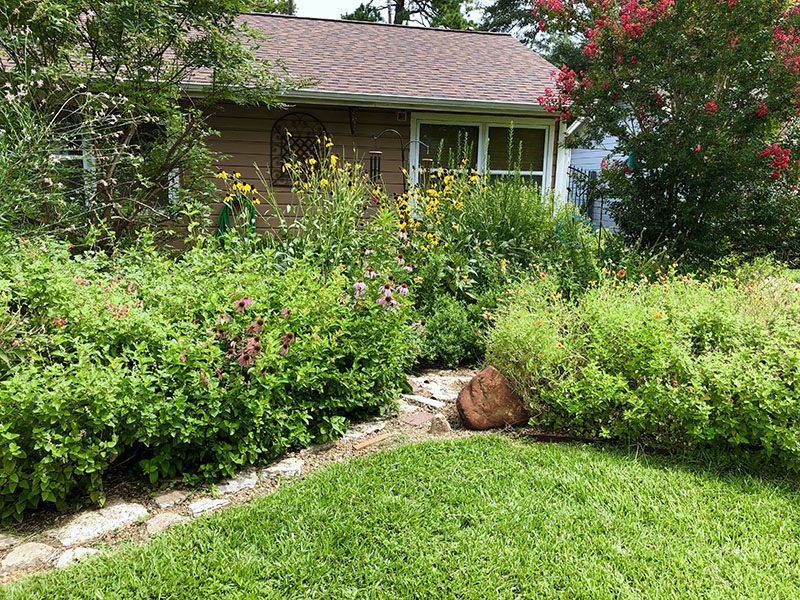
Welcome to St. Julian’s Crossing Wildlife Habitat! Because some may not be familiar with the type of gardening I do, I thought that a short series explaining this gardening would be helpful. This is the first post in that series.
People often ask me what the wildlife-supportive type of gardening that I do is called. Although there are many ways of describing this gardening type, I tend to use the term “wildscaping.”
So what is a wildscape, and how does it differ from traditional landscaping?
WHAT IT IS
Simply put, a wildscape is landscaping with the primary purpose of supporting wildlife. This means that every decision I make for our home’s gardens‒plant choice, installation, arrangement, maintenance, and feeding‒is done with this purpose in mind. Put another way, I intentionally design, populate, and maintain my gardens in ways that will support the greatest biodiversity possible, given environmental conditions, our budget, and my available time.
WHAT IT ISN’T
As Thomas Rainer and Claudia West explain in “Planting in a Post-Wild World,” wildscaping is not ecological restoration, which tries to replicate exactly the dynamics of a real eco-system (like the coastal prairie that used to fill my region of Texas). Instead, a wildscape is a “hybrid of horticulture and ecology,” meaning a garden that imitates aspects of the native eco-system, translating them for an urban setting. As a concrete example, my home gardens contain many of the plants native to the coastal prairie, but they’re not a wide-open, literal prairie because that wouldn’t work in my neighborhood.
SUPPORTING CRITTERS AND COMMUNITY
Although a wildscape’s purpose is to support wildlife, that’s not the only thing to keep in mind. We live in community, not isolation‒particularly in urban neighborhoods. Accordingly, when at all possible, we want our wildscaping choices not only to support wildlife, but also to support and to serve the community of which our wildscape is a part. This takes two forms. First, we want our gardening to be pleasing to neighbors while still supporting wildlife. There are ways to meet both goals, which I’ll discuss later in this series. Second, and equally importantly, we want to engage the community around us in the wonder and beauty of our wildscapes. Each wildscaper is an ambassador to the community. In the words of my husband, we should be evangelizing without proselytizing. So we want to invite our community to walk our wildscaping journey with us, in ways that I will suggest later in this series.
FINAL THOUGHTS ON WILDSCAPING
The great thing about wildscaping is its flexibility. It can be as simple as having just a few potted nectar plants on a patio. It can be as complex as planting many varieties of pollen, nectar, and leaf food sources to benefit multiple wildlife species. But whatever form your wildscape takes, and no matter its size or complexity, it can make a real difference for our diminishing pollinator (and wildlife) populations.
This series will address the “why” and the “how” of creating a beautiful and successful wildscape at your own home. I hope that you will enjoy taking this journey with me!
(The photos are of our home’s wildscape during the spring and summer of 2019.)



